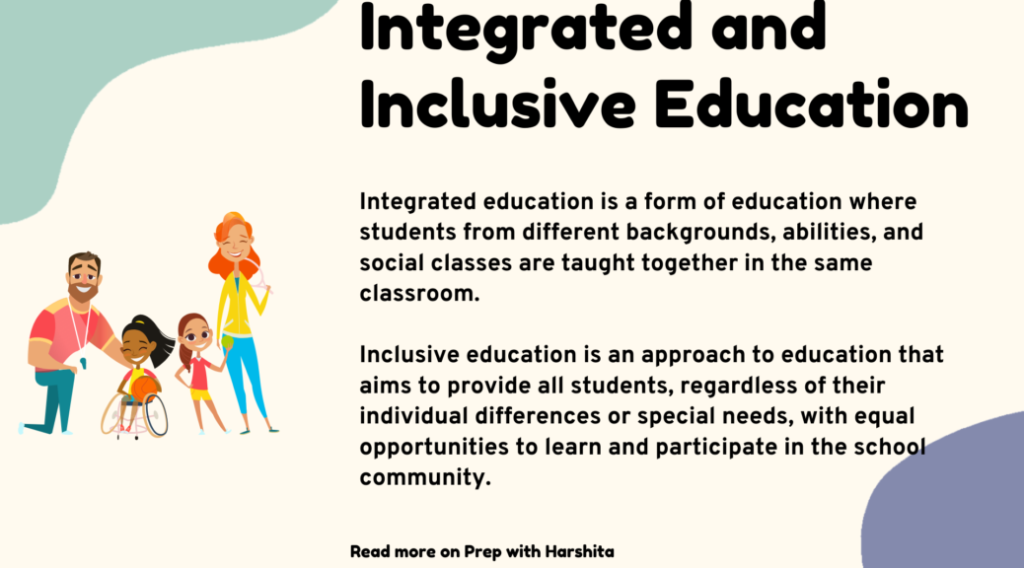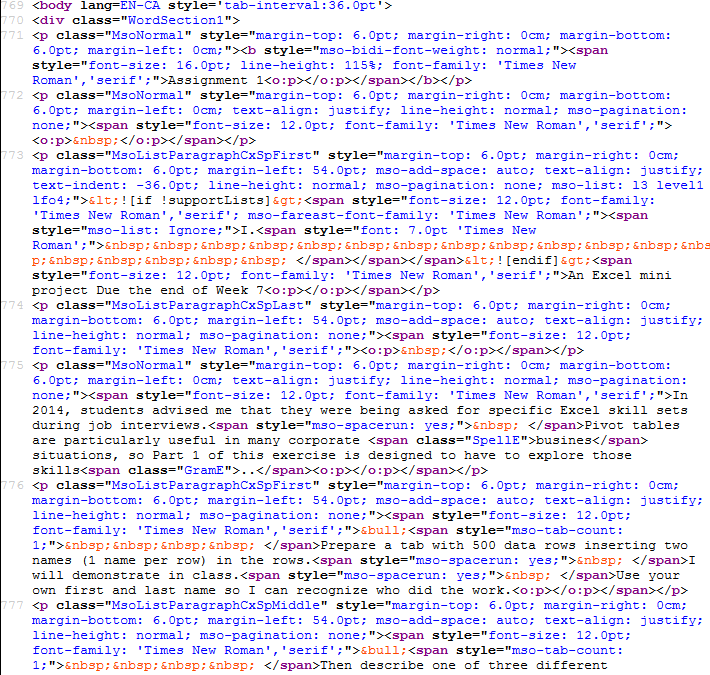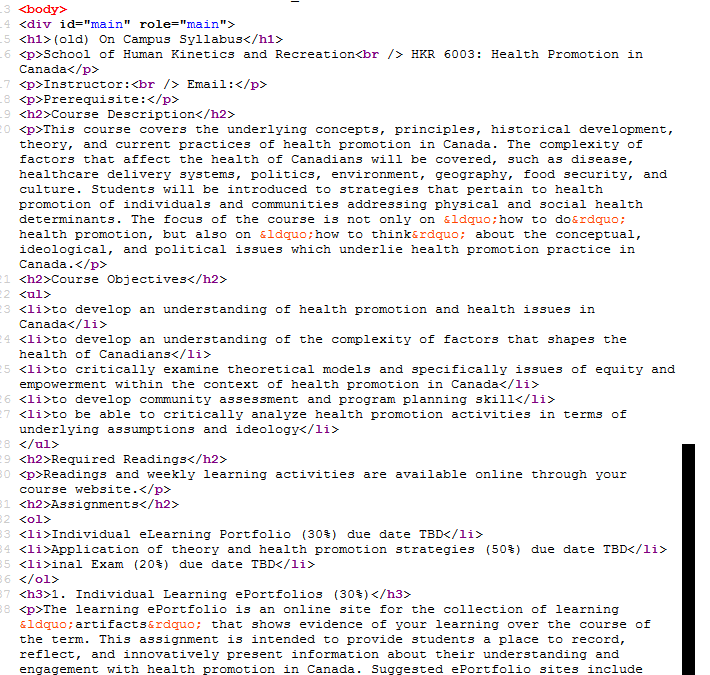How do I make my course more accessible to all students?
Let’s look at some basic things that we can do to help all learners access course content, whether they have disabilities or not.
The Basics
Colour
Use of colour is attractive and can be helpful in conveying and categorizing information. However, it should not be the only method used, as it puts those who are visually impaired or colour blind at a disadvantage. If colour is used as one method to categorize information, avoid using greens, oranges, and reds.
Text Alternatives for Images
For images that are included in course content, a text alternative must be provided so that all students will have access to the same information. The use of alternative descriptions, or alt text is a good practice. The description should be clear, concise, and provide enough information that students will understand the information being conveyed by the image. This page provides a good explanation of what makes good versus bad alt text examples.
When providing information for images, do not repeat the same information that is already included in the content, or in the caption. The goal of alt text is to help someone who is unable to see the image, so that they know the context of the image, and why it was included.
Note the image of business hours on this page. Firstly, it is best practice to provide information as text on the page, rather than in an image. But if it is unavoidable, ensure the information is described, so blind or visually impaired students can still access the same information as students with no visual disabilities.
Alt text is not visible on the page. It is only visible in the html markup of the page, or via an assistive device that reads out alt tags. You can always add extra information in the title tag, since it is visible and will be read by a screen reader. Combined with a caption underneath the image, students will understand the purpose and context of the image, regardless of how they access the information. This page provides more information about title tags.
Note that an image’s alt tag, title, and caption are all different.
Here is an example of an image with a caption, title, and alt text.

Logical Headings
Clear headings help to organize material and help the vision impaired learner organize their mind map of the information.
Semantic Page Elements
Whether you put together your course content in a word processor, a webpage editor (like for a Brightspace topic page), or if you are creating your own website, choosing the correct content types for your material makes a big difference. If you put everything on your page as paragraphs, and then add styles using the available styles, it may look visually how you want, but a screenreader will treat everything on the page as paragraphs. See the example on the left, below.
However, if you ensure your lists are using the list style, and your headings are using the appropriate heading styles, then web browsers and screen reader technologies can provide clear and accurate information to students. See the example on the right, below.
Closed Captioning
Closed captioning for learners with auditory disabilities is important, especially if audio or video is the only way material is presented. If creating an audio or video clip, using a script from which the closed captioning can be created can make the process go smoothly.
Additionally, captions are advantageous in a variety of situations, and many users with no hearing limitations prefer to use them. Read more about who uses assistive technologies in the resource learning experiences of students with disabilities.
Computer Assistive Technologies
Computer assistive technologies includes hardware and software that will help or enable persons with disabilities to use their computer, search the web, input information, etc.
Memorial University offers several assistive technologies for use in its Libraries and for its patrons to borrow. You can reserve assistive technologies from The Commons in person, or online. You can also obtain details of the assistive technologies offered from the Library, or you can visit The Commons’ Assistive Technologies page.
Here are some examples of assistive technologies.
Screen Readers
Screen Readers are software that are usually installed on a computer and will read the computer screen, often in a mechanical voice. Along with Zoom Text, the following may be useful:
Examples:
- Dolphin Screen Reader
- IBM Home Page Reader
- JAWS [demo]
- Dolphin Supernova
- Thunder Screen Reader
- Narrator
- Kurzweil 3000
For People with Mobility or Dexterity Disabilities
There are a variety of navigation and input devices including:
- Keyboard Filters
- Joysticks
- Trackballs
- Eye-gaze systems
- On-screen keyboards
- Mouse grids
- Sip and Puff input devices
Specific software for input and navigation include:
For People with Cognitive Disabilities
- Word prediction software
- Texthelp
- Darwin Daisy Reader
- Bookshare’s Read2Go for iOS
Accessibility Resources
Some major international organizations have made resources available for anyone wanting to know how to make applications or websites more accessible. Some examples are:
- Niagara College’s Accessibility Hub contains 50+ curated open resources (advice articles, checklists, videos, OERs, etc.) to assist in providing accessibility-first practices in higher education.
- The Apple Developer Accessibility Resources page includes information about the Apple tools and resources available to application developers.
- The United Nations has created an Accessibility Guidelines for UN Websites resource that outlines how content providers, designers, and developers can assess and/or improve the accessibility of their website.
References
- Alberta Education. (2019). Learning Technologies: Information for Teachers. http://www.learningtechnologiesab.com/
- American Psychological Association. (2023). Inclusive language guide (2nd ed.). https://www.apa.org/about/apa/equity-diversity-inclusion/language-guide.pdf
- Berkley University of California. (2019). Types of Assistive Technology. https://webaccess.berkeley.edu/resources/assistive-technology
- Colour Blind Awareness. (n.d.). Colour Blind Awareness. http://www.colourblindawareness.org/
- Developmental Disabilities Association. (2019). Assistive Technology. https://www.develop.bc.ca/about-us/assistive-technology/
- HikeSEO. (2024). Image Title Tags: A Beginners Guide. https://hikeseo.co/learn/onsite/image-seo/title-tags/
- Jain, H. (2023, April 5). Integrated and Inclusive Education. Prep with Harshita. https://prepwithharshita.com/integrated-and-inclusive-education/
Originally Published: October 19, 2015





